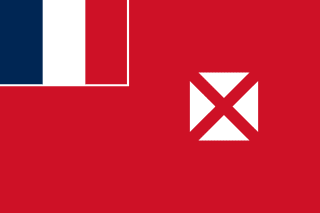Wallis and Futuna - Introduction
Wallis and Futuna (officially: Territory of the Wallis and Futuna Islands) is a country in Oceania, precisely in Polynesia, with a population of about N/A inhabitants today (2025-04-22). The capital city of Territory of the Wallis and Futuna Islands is Mata-Utu, and the official country TLD code is .wf. Wallis and Futuna has cca2, cca3, cioc, ccn3 codes as WF, WLF, N/A, 876 respectively. Check some other vital information below.

Wallis and Futuna , Coat of Arms
Names
| Common | Wallis and Futuna |
|---|---|
| Official | Territory of the Wallis and Futuna Islands |
| Common (Native) | Wallis and Futuna |
| Official (Native) | Territory of the Wallis and Futuna Islands |
| Alternative spellings | WF, Territory of the Wallis and Futuna Islands, Territoire des îles Wallis et Futuna |
| Translations ⬇️ | |
Languages
| fra | French |
|---|
Geography

Wallis and Futuna is located in Polynesia and has a total land area of 142 km². It is bounded by and the capital city is Mata-Utu
| Region/Continent | Oceania |
|---|---|
| Subregion | Polynesia |
| TimeZone | UTC+12:00 |
| Capital city | Mata-Utu |
| Area | 142 km² |
| Population 2025-04-22 | N/A |
| Bordered Countreies | |
| Demonym | |
| eng | Male: Wallis and Futuna Islander / Female: Wallis and Futuna Islander |
| Lat/Lng | -13.3, -176.2 |
Historical data and more

The National Flag of Wallis and Futuna
History section not found.
| Currency | |
|---|---|
| Name | CFP franc |
| Code | XPF |
| Symbol | ₣ |
| Other info | |
| Idependent | no, officially-assigned |
| UN Member country | no |
| Start of Week | monday |
| Car Side | right |
| Codes | |
| ISO 3166-1 alpha-2 | WF |
| ISO 3166-1 alpha-3 | WLF |
| ISO 3166-1 numeric | 876 |
| International calling code | +681 |
| FIFA 3 Letter Code | |
All Important Facts about Wallis and Futuna
Want to know more about Wallis and Futuna? Check all different factbooks for Wallis and Futuna below.

